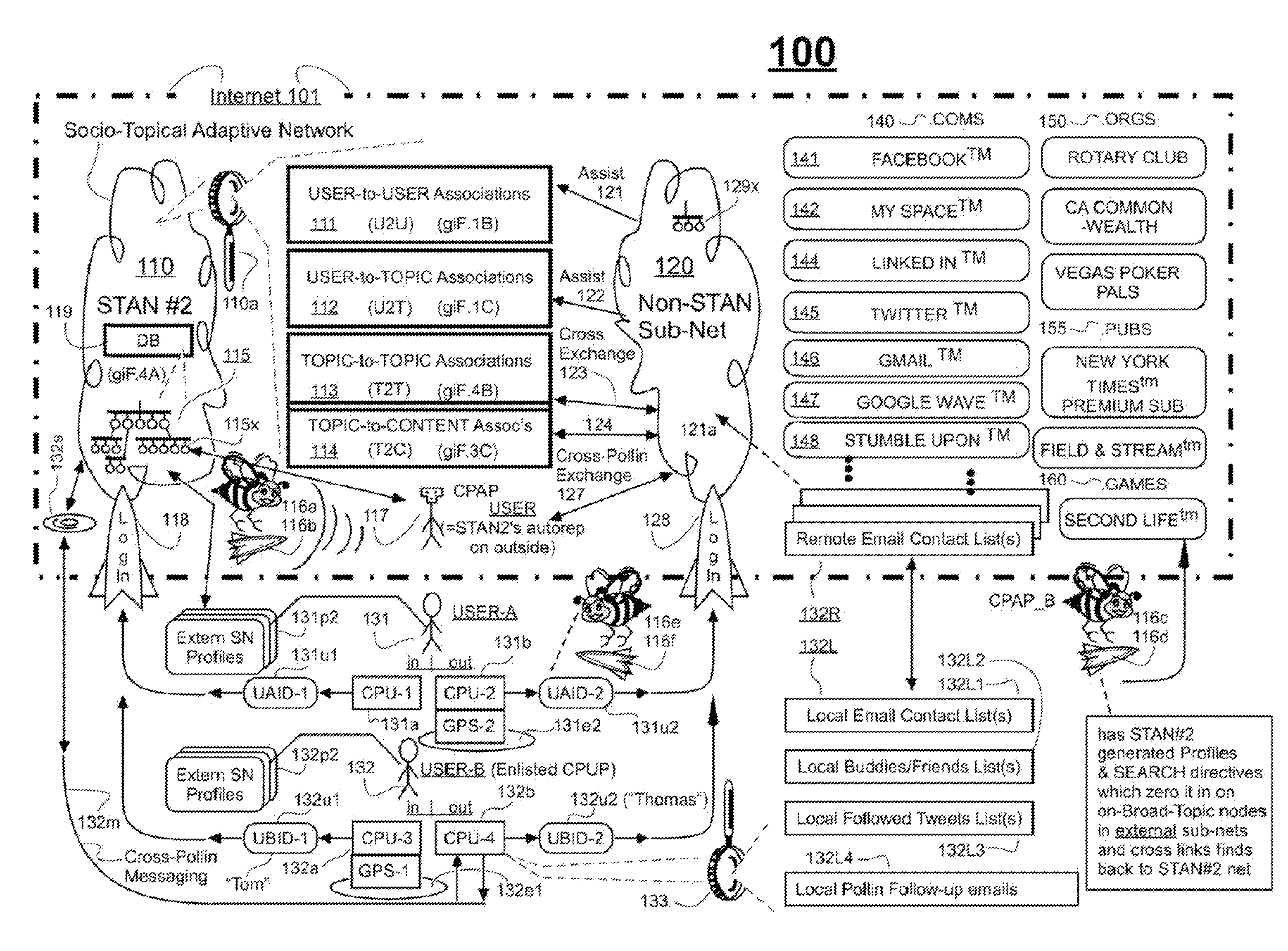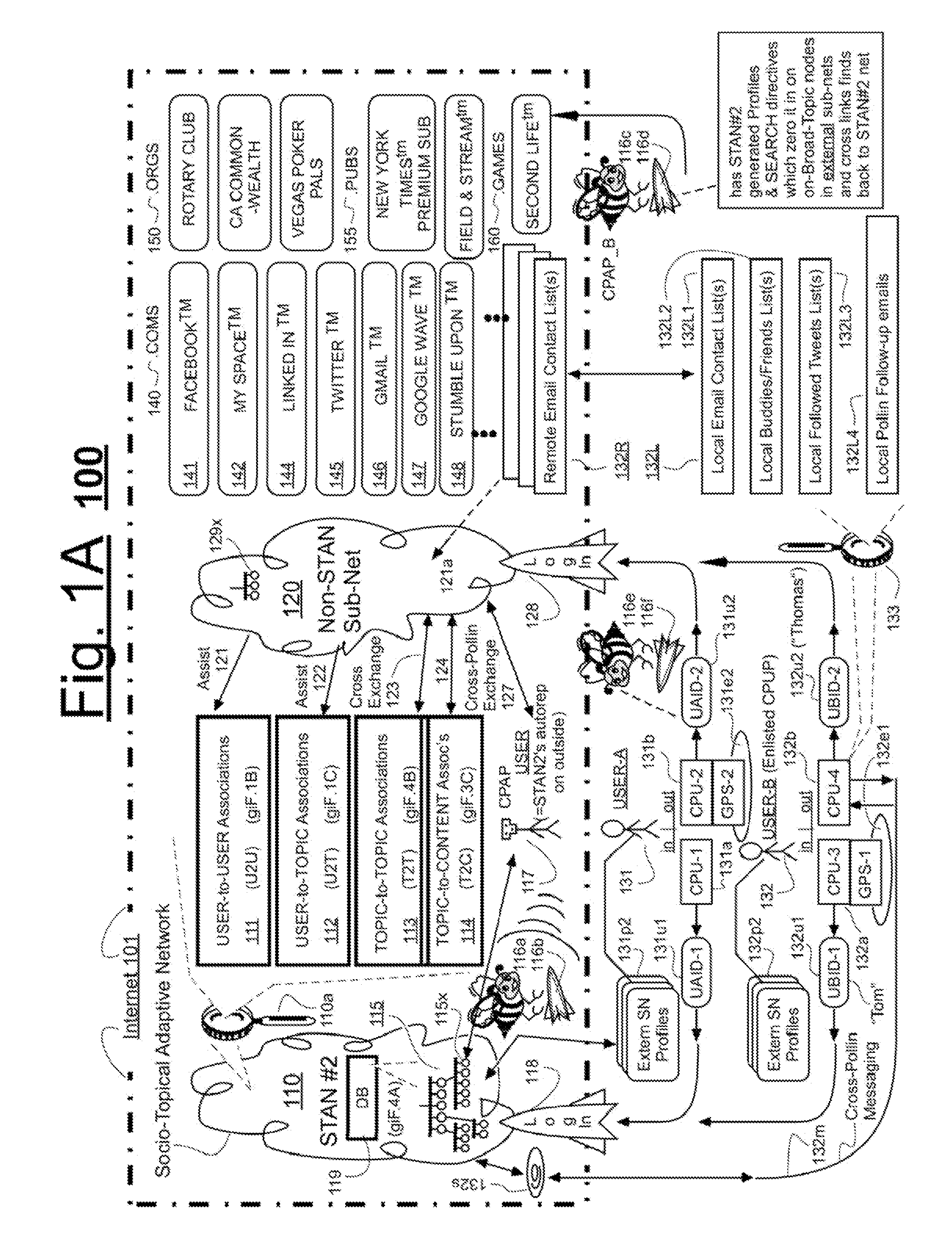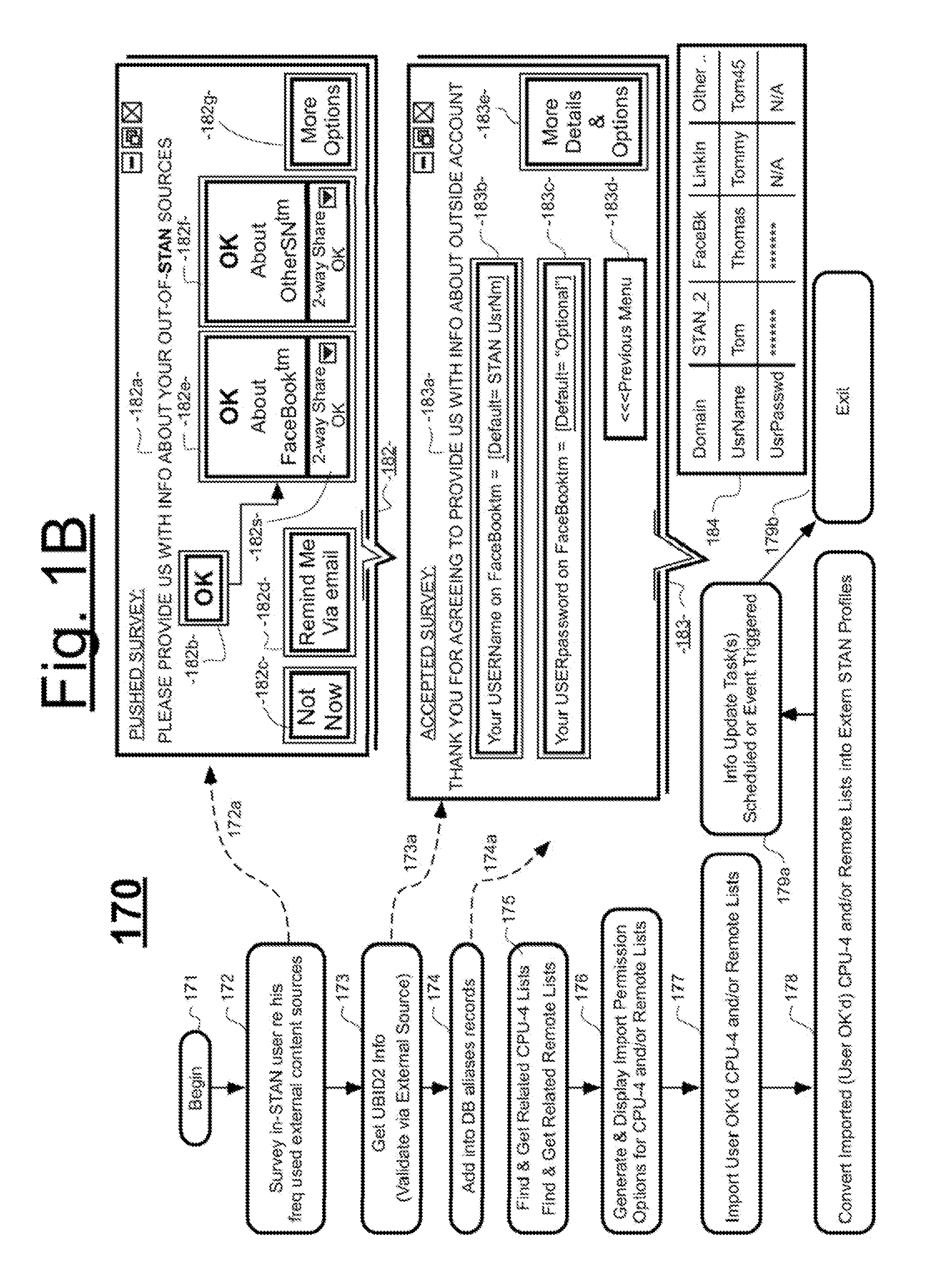Social-topical adaptive networking (STAN) system allowing for cooperative inter-coupling with external social networking systems and other content sources
a social networking and adaptive networking technology, applied in the field of social networking systems, can solve the problems of wasting time, wasting resources, and wasting resources, and achieve the effect of convenient interfa
- Summary
- Abstract
- Description
- Claims
- Application Information
AI Technical Summary
Benefits of technology
Problems solved by technology
Method used
Image
Examples
Embodiment Construction
[0041]FIG. 1A is a block diagram of an electromagnetically inter-linked (e.g., electronically and / or optically linked) networking environment 100 that includes a Social-Topical Adaptive Networking (STAN—2) sub-system 110 in accordance with the present disclosure and which environment 100 includes other sub-network systems (e.g., Non-STAN subnet 120) and whose resources may be used to enhance online experiences of real person users (e.g., 131, 132) of the one or more of the sub-networks 110, 120, etc. due to cross-pollination actions instigated by the STAN—2 sub-network system 110.
[0042]Background descriptions on how a Social-Topical Adaptive Networking (STAN) sub-system may operate can be found in the above-cited and here incorporated U.S. application Ser. No. 12 / 369,274 filed Feb. 11, 2009 by Jeffrey A. Rapaport et al. and originally entitled, “Social Network Driven Indexing System for Instantly Clustering People with Concurrent Focus on Same Topic into On Topic Chat Rooms and / or f...
PUM
 Login to View More
Login to View More Abstract
Description
Claims
Application Information
 Login to View More
Login to View More - R&D
- Intellectual Property
- Life Sciences
- Materials
- Tech Scout
- Unparalleled Data Quality
- Higher Quality Content
- 60% Fewer Hallucinations
Browse by: Latest US Patents, China's latest patents, Technical Efficacy Thesaurus, Application Domain, Technology Topic, Popular Technical Reports.
© 2025 PatSnap. All rights reserved.Legal|Privacy policy|Modern Slavery Act Transparency Statement|Sitemap|About US| Contact US: help@patsnap.com



